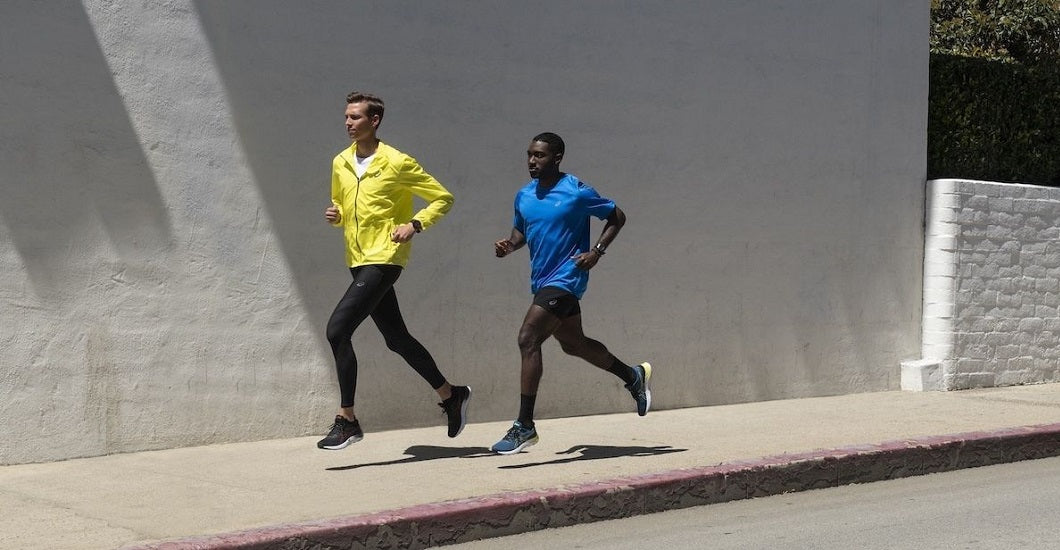Regarding "how to run properly," people tend to care about various aspects related to running form, technique, injury prevention, etc. Some of the most popular points of interest on this topic include:
Running Form
First of all, stretching before running is important. Stretching greatly raises muscle and core temperature, increases blood flow rate, reduces muscle and joint stickiness, and prepares mentally for training. Stretching after running is also helpful in relieving muscle stiffness and shaping muscle lines.
While running, keep your head and shoulders stable. Keep your head squarely in front of you unless the road is uneven, don't lean forward, and keep both eyes on the front. Shoulders are properly relaxed, avoiding the chest; shoulders relax and drop, then shrug up as far as possible, stay for a moment, restore, and repeat.
The arm swing should be a back-and-forth movement with the shoulder as the axis, and the range of left and right movements should not exceed the body's midline. Fingers, wrists, and arms should be relaxed, with the elbow joints angled at about 90 degrees. Both arms, one in front of the other in a ready-to-run position, the back arm elbow joint as high as possible, and then relax the front swing as the movement accelerated higher and higher.
When running, the torso remains upright, conducive to breathing, maintaining balance and stride; the torso should not sway from side to side or undulate up and down too much; the leg forward swing actively sends the hip. Pay attention to the rotation and relaxation of the hip. The thighs and knees swing forward with force, not up; any lateral movement of the legs is excessive and can easily cause knee injuries, so the forward swing of the thighs should be positive.
In addition, if the stride is too large and the calf is stretched too far forward, it will land on its heel, creating a braking brake reaction force that can damage the bones and joints. Therefore, the middle of the foot should be used to land on the ground when landing and allow the impact force to be quickly dispersed to the whole foot.

Breathing Techniques
Breathing efficiently while running is crucial for maintaining stamina, preventing fatigue, and optimizing performance. Different breathing techniques can help runners find a rhythm that suits their pace and running style. Here are some commonly recommended breathing techniques while running:
Diaphragmatic Breathing: Also known as belly breathing, this technique involves breathing deeply by expanding the diaphragm and allowing the lungs to fill fully with air. To practice diaphragmatic breathing, place one hand on your abdomen and the other on your chest. Inhale deeply through your nose, feeling your abdomen rise, and then exhale through your mouth, feeling your abdomen fall. This technique helps improve oxygen exchange and promotes relaxation during runs.
Rhythmic Breathing: In rhythmic breathing, you coordinate your breath with your running strides, maintaining a consistent pattern. The most common pattern is the 3:2 ratio, where you take three steps while inhaling and two while exhaling. This pattern helps establish a regular breathing rhythm and can prevent side stitches.
Nose Breathing vs. Mouth Breathing: Some runners prefer breathing through their nose to filter and warm the air before it enters their lungs. However, others find it more comfortable to breathe through their mouth, especially during intense workouts when the body requires more oxygen. Experiment with both techniques and see what works best for you.
Breathing Cadence: Maintaining a steady breathing cadence for long-distance or steady-state runs can help conserve energy and reduce the risk of hyperventilation. Find a breathing pattern that suits your pace and stick to it.
Exhalation Techniques: Some runners find it beneficial to emphasize their exhalation, making it slightly longer than their inhalation. This technique can help expel more carbon dioxide and increase oxygen intake during each breath.
Breath Control during Hills and Sprints: Focus on maintaining your breathing rhythm during more challenging parts of your run, such as hills or sprints. You may need to adjust your breathing pattern temporarily to accommodate the increased effort.
Practice Breathing Techniques: Incorporate specific breathing exercises into your pre-run warm-up routine or during cool-down stretches to become more comfortable with different breathing techniques.
Remember that finding the right breathing technique may require experimentation and adaptation to your needs and fitness level. It's essential to listen to your body and make adjustments as needed. If you experience breathing difficulties or respiratory issues while running, consider consulting a healthcare professional for personalized advice.

Running Shoes and Gear
Running Shoes:
Know Your Foot Type: Determine your foot type - neutral, overpronation, or supination (underpronation). This can be done through a gait analysis at a specialty running store or by a podiatrist. Different foot types require specific shoe features for optimal support and stability.
Shoe Size and Fit: Make sure the shoes fit well with about a thumb's width of space between your longest toe and the front of the shoe. Avoid shoes that are too tight or loose, as they can lead to blisters or discomfort during your run.
Try Before Buying: Visit a running specialty store to try on different brands and models. Walk around and jog to feel the shoes' comfort and fit. Many specialty stores have knowledgeable staff who can guide you in finding the right pair based on your needs.
Consider Terrain and Distance: Consider where you'll often run (road, trail, track, or run indoors on a treadmill) and the distance you'll cover. Some shoes are specifically designed for different terrains and distances, offering varying levels of cushioning and support.
Replace Regularly: Running shoes have a limited lifespan. Depending on your mileage and running style, consider replacing your shoes every 300 to 500 miles (approximately 480 to 800 km) or when you notice signs of wear and tear.
Running Gear:
Moisture-Wicking Clothing: Choose moisture-wicking fabrics that help keep sweat away from your skin, keeping you dry and comfortable during your run.
Weather-Appropriate Clothing: Dress according to the weather conditions. Wear layers that can be easily removed in cold weather as your body warms up. In hot weather, opt for lightweight and breathable clothing.
Comfortable Socks: Invest in good-quality running socks that prevent blisters and provide extra cushioning and support.
Reflective Gear: Wear reflective clothing or accessories to enhance your visibility and safety if you run in low-light conditions.
Hydration Gear: For longer runs, consider carrying a water bottle, hydration pack, or hydration belt to stay properly hydrated.
GPS Watch or Running App: A GPS watch or running app on your smartphone can help track your distance, pace, and other metrics to monitor your progress and set goals.
Sun Protection: Don't forget sunscreen, a hat, or sunglasses to protect yourself from the sun's rays during outdoor runs.
Finding the right running shoes and gear might involve trial and error. It's crucial to prioritize comfort, functionality, and support to enhance your running experience and reduce the risk of injury.

Injury Prevention
Running injury prevention is crucial for maintaining a healthy and sustainable running routine. Here are some specific injury prevention strategies to keep in mind:
Gradual Progression: Avoid sudden increases in mileage, pace, or intensity. Gradually build up your running routine to give your body time to adapt and reduce the risk of overuse injuries.
Warm-Up and Cool-Down: Always start with a dynamic warm-up before running to increase blood flow and warm up your muscles. After running, perform static stretches to improve flexibility and promote recovery.
Strength Training: Include strength training exercises in your routine to build strong muscles that support your running form and reduce the strain on your joints.
Cross-Training: Engage in other forms of exercise, such as swimming, cycling, or yoga, to give your running muscles a break and work on different body parts.
Listen to Your Body: Pay attention to any signs of pain or discomfort. If you experience persistent pain, reduce your running volume, or take a break to allow your body to recover.
Rest and Recovery: Schedule regular rest days in your training plan to give your body time to heal and rejuvenate.
Flexibility and Mobility: Incorporate regular stretching and mobility exercises to improve flexibility and joint range of motion.
Listen to Professionals: If you have specific concerns or recurring injuries, consider consulting a physical therapist or sports medicine professional for personalized advice.
Recovery Techniques: Use recovery tools like foam rollers, massage balls, and compression garments to alleviate muscle soreness and improve recovery.
Address Muscle Imbalances: Identify and address any muscle imbalances that may contribute to injury risk. Strengthen weak areas and stretch tight muscles to achieve better balance.
Remember, injury prevention is a proactive approach to maintaining your running routine. You can reduce the likelihood of running-related injuries and enjoy a safer and more enjoyable running experience.
Conclusion
In conclusion, running can be rewarding and enjoyable with care and attention to key principles.






Leave a comment
All comments are moderated before being published.
This site is protected by hCaptcha and the hCaptcha Privacy Policy and Terms of Service apply.